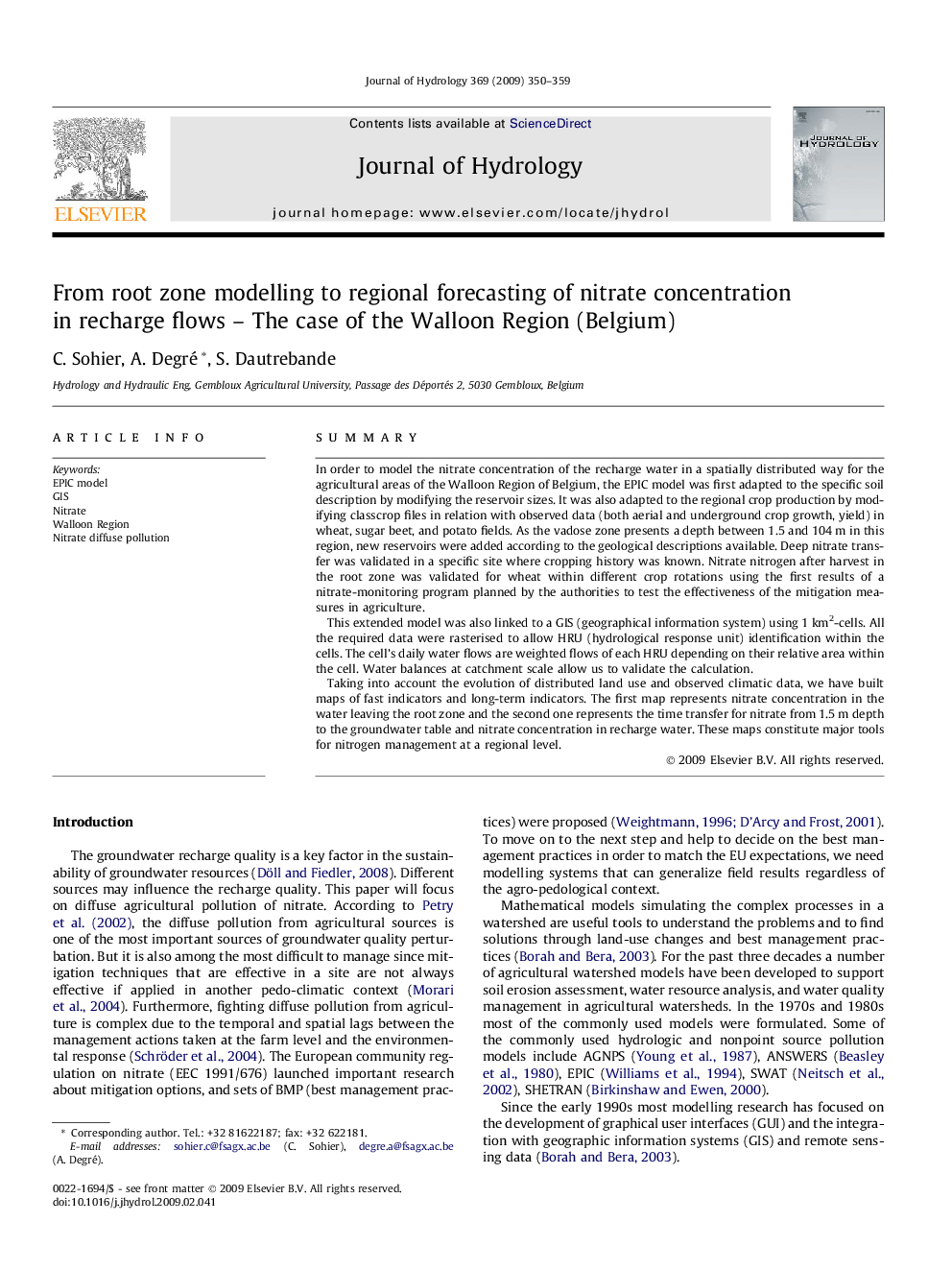| Article ID | Journal | Published Year | Pages | File Type |
|---|---|---|---|---|
| 4578929 | Journal of Hydrology | 2009 | 10 Pages |
SummaryIn order to model the nitrate concentration of the recharge water in a spatially distributed way for the agricultural areas of the Walloon Region of Belgium, the EPIC model was first adapted to the specific soil description by modifying the reservoir sizes. It was also adapted to the regional crop production by modifying classcrop files in relation with observed data (both aerial and underground crop growth, yield) in wheat, sugar beet, and potato fields. As the vadose zone presents a depth between 1.5 and 104 m in this region, new reservoirs were added according to the geological descriptions available. Deep nitrate transfer was validated in a specific site where cropping history was known. Nitrate nitrogen after harvest in the root zone was validated for wheat within different crop rotations using the first results of a nitrate-monitoring program planned by the authorities to test the effectiveness of the mitigation measures in agriculture.This extended model was also linked to a GIS (geographical information system) using 1 km2-cells. All the required data were rasterised to allow HRU (hydrological response unit) identification within the cells. The cell’s daily water flows are weighted flows of each HRU depending on their relative area within the cell. Water balances at catchment scale allow us to validate the calculation.Taking into account the evolution of distributed land use and observed climatic data, we have built maps of fast indicators and long-term indicators. The first map represents nitrate concentration in the water leaving the root zone and the second one represents the time transfer for nitrate from 1.5 m depth to the groundwater table and nitrate concentration in recharge water. These maps constitute major tools for nitrogen management at a regional level.
